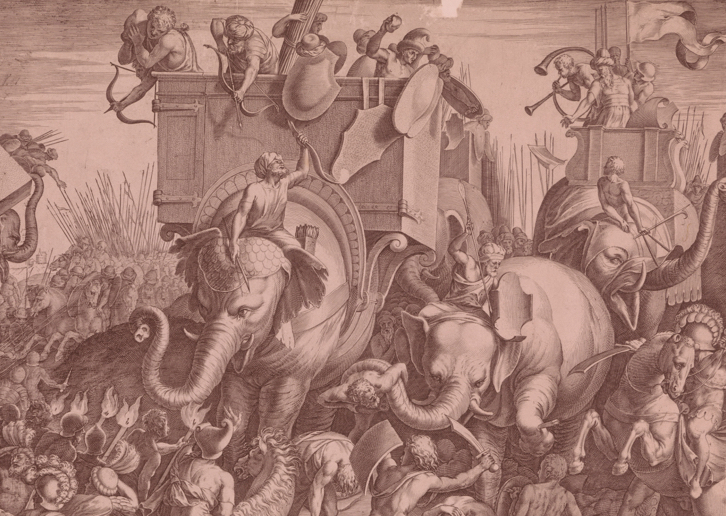
In 218 BCE the legendary Hannibal began his march of men and elephants from the Carthaginian base in eastern Spain, through the Alps and into the Italian peninsula, bringing the second Punic War to the gates of Rome.
The story is an famous one that left a breadcrumb-like trail throughout history. The war was recorded by ancient historians like Livy and Polybius, tattooed in treasured works of art by Raphael and Giovanni Battista Tiepolo, and, according to new research, chemically embedded in Roman coins.
Professor Fleur Kemmers and Dr. Katrin Westner of Goeth University in Frankfurt led a team of scientists working to find the source of Roman money. To achieve their aim, the group took 55 Roman silver coins and two Carthaginian silver coins minted between 225 BCE and 101 BCE and, using mass spectrometry, read the lead isotope signatures within the coins. Lead isotope signatures show where the silver used to make the coins was mined, allowing the researchers to chart Roman conquest by scientifically proving where the would be empire’s money was coming from.
Rome’s military and monetary success didn’t come quickly however. After Hannibal crossed the Alps, a 15 year bloodbath ensued, with the Carthaginians killing or maiming one million Roman citizens. Yet despite Hannibal’s military prowess, instead of conquering Rome, he ended up in northern Africa in a showdown against Rome’s Scipio Africanus. Hannibal was defeated and the war finally ended.
With Carthage vanquished, Rome not only received massive reparation payments from its foe, it also seized control of Spain and the bountiful silver mines located within the Iberian peninsula. Dr. Westner says the lead isotope signatures from Roman coins show that before the war, Romans were producing coinage from Aegean sources. Coins minted after the war reflect Rome’s new reality as a burgeoning powerhouse in that the isotope signatures show they were produced from Spanish sources. According to Westner,
"This massive influx of Iberian silver significantly changed Rome's economy, allowing it to become the superpower of its day. We know this from the histories of Livy and Polybius and others, but our work gives contemporary scientific proof of the rise of Rome. What our work shows is that the defeat of Hannibal and the rise of Rome is written in the coins of the Roman Empire.”
Westner and her team are presenting their findings at Goldschmidt 2017, an annual conference on geochemistry and related subjects.



